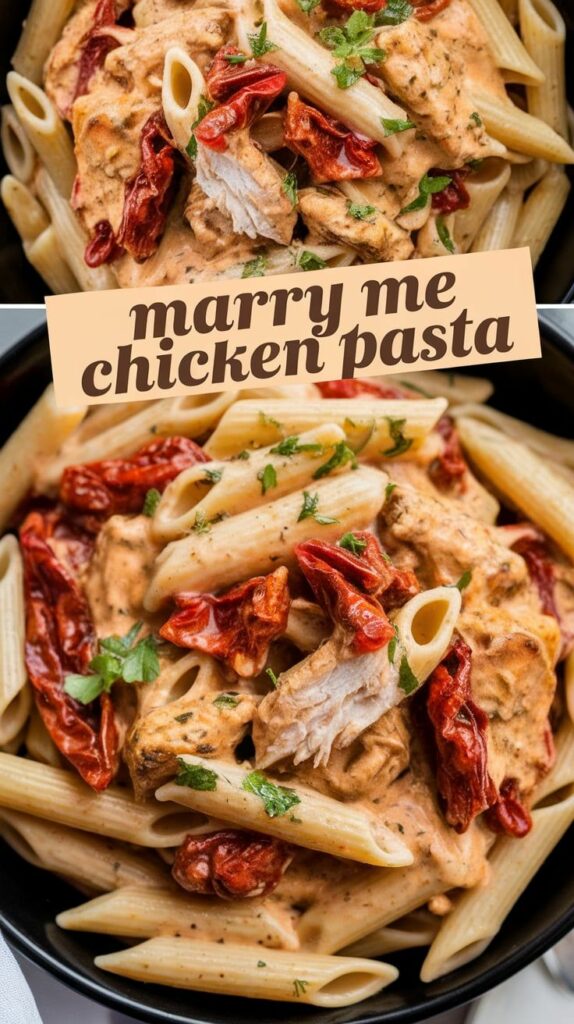Welcome to my ultimate spring roll recipe! If you’ve ever wanted to create restaurant-quality homemade spring rolls in your own kitchen, you’re in the right place. These easy spring rolls are a delightful appetizer that brings fresh flavors and exciting textures to your table.
My passion for creating delicious spring rolls started years ago when I first discovered how simple yet incredibly tasty they can be. This spring roll recipe is designed to be straightforward, allowing even beginner cooks to achieve fantastic results with minimal effort.
Whether you’re preparing for a casual family dinner or hosting a gathering with friends, these homemade spring rolls will impress everyone. They’re light, crisp, and packed with vibrant ingredients that make every bite a culinary adventure.
In this comprehensive guide, I’ll walk you through everything you need to know about crafting perfect spring rolls. From selecting the right ingredients to mastering the rolling technique, you’ll gain the confidence to create these delectable treats with ease.
Why I Love Making Fresh Spring Rolls at Home
My passion for homemade Asian food started with a simple curiosity about creating delicious, healthy meals in my own kitchen. Fresh spring rolls quickly became my culinary obsession, transforming the way I approach cooking and nutrition.
My Journey with Asian Cuisine
Growing up, I was fascinated by the vibrant flavors and delicate techniques of Asian cooking. My first attempt at making healthy spring rolls was both challenging and rewarding. I discovered that creating these delicate rolls requires patience, practice, and a genuine love for fresh ingredients.
- Learned traditional rolling techniques
- Experimented with different vegetable combinations
- Developed a passion for authentic flavors
Health Benefits of Homemade Spring Rolls
Preparing fresh spring rolls at home allows complete control over ingredients. Unlike restaurant versions, my homemade Asian food is packed with nutrients, low in calories, and free from unnecessary additives. The combination of crisp vegetables, lean proteins, and rice paper creates a balanced, nutritious meal.
Perfect for Any Occasion
These versatile healthy spring rolls have become my go-to recipe for everything from casual family dinners to elegant party appetizers. They’re light, refreshing, and always impress guests with their colorful presentation and incredible taste.
Essential Ingredients for Perfect Spring Rolls
Creating delicious spring rolls starts with selecting the right spring roll ingredients. My culinary journey has taught me that fresh, high-quality components make all the difference in these delightful appetizers.
For the best results, I recommend gathering these key fresh vegetables for spring rolls:
- Crisp lettuce leaves
- Julienned carrots
- Cucumber strips
- Bean sprouts
- Fresh herbs like mint and cilantro
Rice paper wrappers are the foundation of any authentic spring roll. I always use high-quality, thin rice paper that becomes translucent when soaked. These delicate wrappers allow the vibrant colors and textures of your ingredients to shine through.
| Ingredient Category | Recommended Options | Flavor Profile |
|---|---|---|
| Proteins | Cooked shrimp, tofu, grilled chicken | Light, lean |
| Vegetables | Carrots, cucumber, lettuce | Crisp, fresh |
| Herbs | Mint, cilantro, basil | Aromatic, bright |
My secret to perfect spring rolls is balancing textures and flavors. Mixing crunchy vegetables with soft proteins creates a harmonious bite that keeps everyone coming back for more.
Pro tip: Always have your ingredients prepped and ready before starting to assemble. This makes the rolling process smooth and enjoyable!
Kitchen Tools and Equipment You’ll Need
Creating delicious spring rolls requires the right kitchen equipment. I’ve learned through years of experience that having the proper spring roll making tools can make a huge difference in your cooking process. The right kitchen equipment for spring rolls transforms a potentially challenging recipe into an enjoyable culinary adventure.
Preparing for spring roll making is about gathering the right tools and understanding their purpose. Let me walk you through the essential equipment you’ll want in your kitchen.
Essential Spring Roll Preparation Tools
- Sharp chef’s knife for precise vegetable cutting
- Large cutting board for ingredient preparation
- Mixing bowls in various sizes
- Measuring cups and spoons
- Clean kitchen towels for wrapping and drying ingredients
Advanced Spring Roll Kitchen Tools
While not absolutely necessary, some additional tools can elevate your spring roll making experience:
- Mandoline slicer for uniform vegetable cuts
- Rice paper holder or special rolling mat
- Kitchen scale for precise ingredient measurements
- Digital thermometer for checking oil temperature
Investing in quality spring roll making tools doesn’t mean breaking the bank. Start with basics and gradually expand your kitchen equipment for spring rolls as you become more comfortable with the technique.
Spring Roll Recipe: My Tried and Tested Method
Creating the perfect spring rolls at home can be easier than you might think. I’ll walk you through my best spring roll recipe steps that guarantee delicious results every time. The key to amazing spring rolls is preparing each component with care and attention to detail.
Learning how to make spring rolls starts with gathering your ingredients and preparing your workspace. I recommend setting out all your ingredients before you begin cooking. This method ensures a smooth cooking process and helps you stay organized.
- Prepare your filling ingredients
- Chop vegetables uniformly
- Cook any proteins thoroughly
- Mix filling ingredients gently
- Soften rice paper wrappers
- Assemble spring rolls carefully
When mastering the spring roll recipe steps, remember that practice makes perfect. My first few attempts weren’t great, but I quickly learned techniques that improved my skills. The most crucial aspects are keeping your filling balanced and not overstuffing the wrapper.
For the best spring roll recipe results, I suggest using fresh, crisp vegetables and high-quality proteins. Experiment with different combinations to find your favorite filling. Whether you prefer vegetarian or meat-based spring rolls, the technique remains similar.
Pro tip: Keep your rice paper slightly damp while rolling to prevent cracking. Work on a clean, flat surface and use gentle pressure when wrapping to create tight, compact spring rolls that hold together perfectly.
Preparing the Filling: Tips and Techniques
Creating the perfect spring roll filling is an art that requires careful ingredient selection and preparation. The right combination of vegetables, proteins, and seasonings can transform an ordinary spring roll into a culinary masterpiece.
Vegetable Prep for Spring Rolls: Cutting and Chopping Techniques
Vegetable prep for spring rolls demands precision and care. I recommend using these cutting techniques to ensure your vegetables are perfectly prepared:
- Julienne carrots and cucumbers into thin, matchstick-sized strips
- Slice bell peppers into thin, uniform pieces
- Chop fresh herbs like mint and cilantro finely
- Shred cabbage for added crunch and texture
Protein Options for Spring Roll Filling
When selecting protein for spring rolls, variety is key. I’ve found several delicious options that work perfectly:
| Protein Type | Preparation Method | Flavor Profile |
|---|---|---|
| Shrimp | Poached and deveined | Sweet and delicate |
| Tofu | Pressed and lightly pan-fried | Mild and absorbent |
| Chicken | Grilled and shredded | Savory and versatile |
Achieving the Perfect Filling Texture
The secret to an exceptional spring roll filling is balancing textures. I always aim to combine crisp vegetables with tender proteins, creating a harmonious blend that makes each bite exciting.
When preparing your spring roll filling, focus on these key texture tips:
- Blanch harder vegetables briefly to soften
- Pat proteins dry to prevent soggy rolls
- Mix fresh and cooked ingredients for contrast
- Season ingredients before assembling
Rolling Technique: Master the Perfect Wrap
Mastering the spring roll wrapping technique is an art that takes practice but becomes easier with each roll you make. I’ll share my top tips for creating beautiful, tight spring rolls that won’t fall apart when you serve them.
When learning how to roll spring rolls, the first step is preparing your workspace. Lay out a clean, damp kitchen towel and a shallow dish of warm water for softening rice paper wrappers. The key is to work quickly but carefully.
- Soak rice paper wrapper for 10-15 seconds in warm water
- Place wrapper on damp towel, allowing excess water to drain
- Position filling slightly below the center of the wrapper
- Fold bottom edge over filling tightly
- Fold in side edges to create an envelope shape
- Roll upward, pressing gently to seal
Preventing tears during the spring roll wrapping technique requires a gentle touch. Don’t oversoak the rice paper – it should be pliable but not falling apart. Use about 2-3 tablespoons of filling to avoid overstuffing, which can cause splitting.
Practice makes perfect with spring rolls. My first attempts were messy, but I quickly learned that consistent pressure and careful folding create the most professional-looking rolls. Keep your hands slightly wet to prevent sticking, and work on a smooth surface.
| Common Mistake | Solution |
|---|---|
| Overfilling wrapper | Use 2-3 tablespoons of filling maximum |
| Wrapper tears | Handle gently, don’t oversoak |
| Loose rolling | Apply consistent, gentle pressure |
With these tips, you’ll be rolling perfect spring rolls in no time. Remember, each roll gets easier, so don’t get discouraged by initial imperfections.
Delicious Dipping Sauce Variations
Spring roll dipping sauces can transform an ordinary meal into an extraordinary culinary experience. As a passionate home cook, I’ve discovered that the right sauce elevates homemade spring rolls from good to unforgettable. Exploring Asian dipping sauces has become my favorite way to add excitement to my cooking.
The key to amazing spring rolls is creating complementary dipping sauces that enhance the fresh ingredients. Let me share three incredible options that will take your spring rolls to the next level.
Classic Peanut Sauce
Peanut sauce is a staple in many Asian cuisines. My version combines smooth peanut butter with:
- Soy sauce
- Rice vinegar
- Honey
- Ginger
- Garlic
Sweet Chili Sauce
For those who love a bit of heat, this homemade dipping sauce brings the perfect balance of sweet and spicy. I mix:
- Red chili flakes
- Sugar
- Vinegar
- Garlic
Vietnamese Fish Sauce
Known as nuoc cham, this traditional Asian dipping sauce offers a tangy, umami flavor. My recipe includes:
- Fish sauce
- Lime juice
- Water
- Sugar
- Minced garlic
Each of these spring roll dipping sauces brings a unique flavor profile that will make your homemade spring rolls truly spectacular.
Storage and Make-Ahead Tips
When it comes to storing spring rolls, I’ve learned a few tricks to keep them fresh and delicious. Fresh spring rolls are best enjoyed immediately, but sometimes you’ll want to prepare them in advance or save leftovers. Rice paper wrappers can dry out quickly, so I recommend wrapping them in damp paper towels and storing them in an airtight container in the refrigerator.
For make-ahead spring rolls, I suggest preparing the filling ingredients separately. Chopped vegetables and cooked proteins can be stored in sealed containers for up to two days. When you’re ready to assemble, the components will be fresh and ready to go. If you’re dealing with spring roll leftovers, fried versions can be reheated in an air fryer or oven to maintain their crispy texture.
Freezing spring rolls is another great option for meal prep. Uncooked spring rolls can be placed on a baking sheet, frozen individually, and then transferred to a freezer bag. When you’re ready to enjoy them, thaw in the refrigerator and cook as usual. Pro tip: always separate layers with parchment paper to prevent sticking when storing or freezing.
I’ve found that proper storage makes a huge difference in maintaining the quality of your spring rolls. Whether you’re preparing a batch for later or saving some leftovers, these simple techniques will help you enjoy delicious spring rolls anytime.



